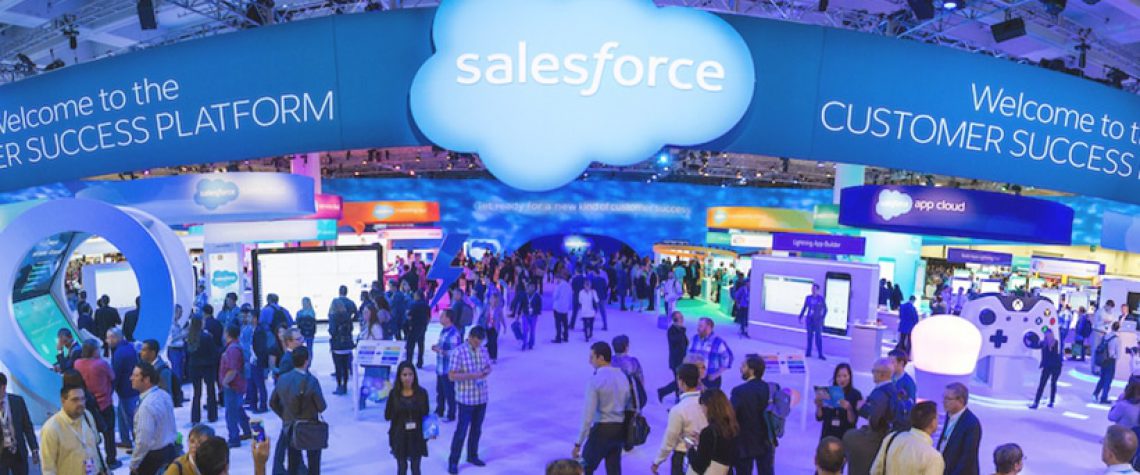I’ll see your $2.6 billion and raise you $15.7 billion. Today, Salesforce.com (CRM) announced a major deal to acquire Tableau Software, a company so synonymous with data, their stock symbol is DATA. This follows last week’s major reveal that Google Cloud is buying Looker, another top data analytics player. It’s hard to know if these two deals are directly related, as big deals take time. However, Looker may have stirred the pot as it shopped itself around for some time before its deal with Google, as CNBC reported.
Regardless, these two recent moves signal a major consolidation happening in the data analytics space. While the headline is that the number one CRM company in Salesforce just bought the number one data analytics company in Tableau, there are some other major storylines just under the surface.
First, we all know that Salesforce is a pioneer in Software-as-a-Service, creating the very first enterprise application available through the web browser. This revolutionized software and created a new business model for the countless SaaS applications that would follow. Unfortunately, Tableau is not one of them. It’s primary product is a desktop application with a cloud connector hanging off as an afterthought. It’s not because Tableau is old software: Tableau was founded in 2003, four years after Salesforce.com. It’s that Tableau made a deliberate choice to go all-in on desktop and only later added an online extension with a subset of features.
Only recently has Tableau decided to invest more heavily in cloud with Tableau Online, and we expect Salesforce to use its SaaS expertise to deliver a full-featured SaaS version of the product. However, it will likely take years for the transformation from desktop application to cloud application to be complete. In the pure technological sense, virtually any of the other data analytics platforms, from Looker to Periscope, would have been a better fit with Salesforce because they are all native cloud applications. Looker, the recent acquisition by Google, sold for a fraction of the price.
Mark Benioff confirmed that the Tableau deal was just as much about the company’s ambition toward world domination as anything else when he announced that it’s making Seattle it’s second headquarters with the Tableau acquisition.
A second storyline, and perhaps a more significant one, has less to do with technology and more to do with business ambitions. It’s well known that Salesforce CEO Mark Benioff wants to be a major cloud players along with Amazon and Microsoft. If there is one thing that drives Salesforce execs crazy, it’s probably that customers have to move their data out of the Salesforce cloud to analyze it. Salesforce is a fantastic CRM product, but it’s not (currently) an analytics platform. Yes, it provides some basic reporting capabilities, but if you want anything more advanced you need to move your data to a data warehouse probably on AWS, Azure, or Google Cloud. We (Hashpath) have helped many customers do just that: move their company’s data out of Salesforce to Snowflake, Redshift, and others and build dashboards around it.
So it’s very likely that Salesforce is trying to build an integrated analytics stack inside their own cloud. They have a massive amount of customers data, and they want to keep it there. If they can provide a way to analyze it in place, customers won’t need to migrate to other clouds. Salesforce has tried (and arguably failed) to create an integrated analytics cloud before. In 2014, they announced an analytics cloud called Wave based on their 2013 acquisition of BI startup EdgeSpring, but it never really caught on. Perhaps they can get it done now with the visualization capabilities from Tableau.
Mark Benioff confirmed that the Tableau deal was just as much about the company’s ambition toward world domination as anything else when he announced that it’s making Seattle it’s second headquarters with the Tableau acquisition. Yes, it’s setting up a headquarters in Microsoft and Amazon’s backyard, the cloud capital of the world.
This week and last week’s news about Looker and Tableau speak to the trend of creating integrated analytics stacks through acquisitions. A frequent question: will Sisense or Domo be next? They are already integrated platforms in and of themselves, making it less clear how you integrate them with the other best-of-breed technologies. Perhaps this is a reason why they’ve yet to be snatched up. We think a more likely next acquisition is Snowflake.
How long before Salesforce buys Snowflake? @Benioff is the cloud, but can’t compete with AWS, Google, or MSFT Azure yet…
— Josh James (@joshjames) June 10, 2019
Meanwhile, as big companies acquire enterprise players, the entry-level data analytics market continues to get disrupted by open source solutions. Redash and Metabase were the first-try alternatives. Now, the Meltano project out of GitLab is investing heavily in stitching together fragmented open-source data analytics projects into a single end-to-end platform. Meltano describes itself as “an open source convention-over-configuration product for the whole data lifecycle, all the way from loading data to analyzing it.” We are excited to see what happens in this space.
About the author: Seth Rosen is principal consultant at Hashpath, a data analytics consulting firm helping companies build powerful data applications. He is also an instructor of Data Analytics and Tableau at General Assembly. Want to talk data? Email seth@hashpath.com anytime.


